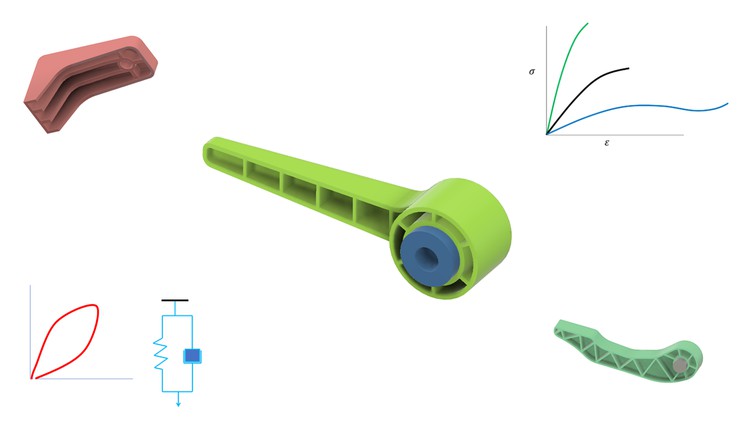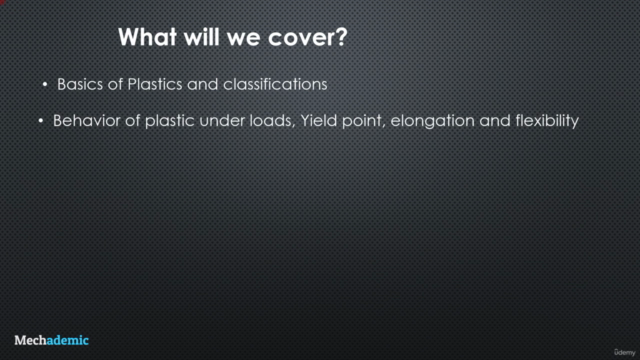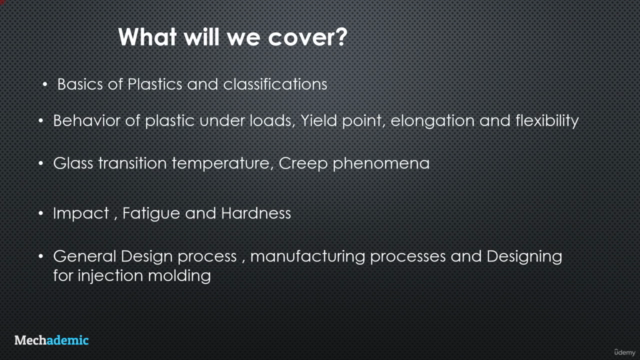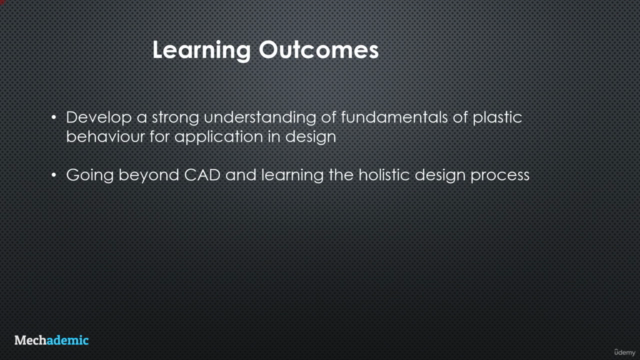Basics of Plastics design for design engineers

Why take this course?
📚 Course Title: Basics of Plastics Design for Design Engineers
🎓 Course Headline: Unlock the Secrets of Mechanical Design with Plastics!
Course Description:
Plastics as a family of materials have been exceedingly used for product design due to their versatility, lightweight properties, and wide range of applications. However, designing with plastic materials is generally not so straightforward as steels and aluminum. This is because the material properties of plastics depend on various factors such as temperature, stress levels, and the type of polymer used.
In this comprehensive course, Basics of Plastics Design for Design Engineers, we delve into the essential considerations when designing with plastic materials. Join us to explore a world where understanding the intricacies of plastics can revolutionize your design approach.
Key Topics Covered:
-
What are polymers and plastics? We'll start at the basics, understanding the difference between synthetic vs. natural polymers and how they form the backbone of plastic materials.
-
Thermo Plastics vs. Thermosets: Learn about the distinct properties that make each type suitable for different design applications.
-
Amorphous vs. Crystalline Types: Discover how these structures influence the material's flexibility and rigidity, as well as its behavior under mechanical stress.
-
Advantages and Disadvantages of Plastics: Understand why designers choose plastics and when they might opt for alternative materials.
-
Design Approach with Data and Tests: We'll discuss the importance of empirical data and testing in informing your design choices.
-
Mechanical Behavior: Analyze stress-strain diagrams and understand how to apply this knowledge to predict material performance.
-
Flexibility, Rigidity, Ductile vs. Brittle Behavior: Learn how to select the right plastic for a given application based on its mechanical properties.
-
Yield Point and Elongation: Gain insights into these critical parameters that dictate a material's load-bearing capacity.
-
Glass Transition Temperature: Understand this key concept in determining a plastic's performance over a range of temperatures.
-
Viscoelastic Behavior and Models: Explore the time-dependent properties of plastics and how they can affect design decisions.
-
Creep and Creep Rupture: Learn about the phenomenon of creep and its implications for long-term material performance.
-
Fatigue, Fracture Toughness, and Impact Toughness: Compare plastics to steel in these areas and understand which materials are superior under different conditions.
-
Hardness Property: We'll cover various methods of hardness measurement and why it's crucial for design selection.
-
Abrasion and Friction Properties: Identify the best plastics for applications where anti-friction performance is paramount.
-
Reinforced Plastics and Anisotropy: Dive into the world of reinforced plastics, their impact on material properties, and how anisotropy can affect design performance.
-
Designing Plastics within the Larger Design Process: Learn the steps to consider and checks to include when integrating plastics into your overall design strategy.
-
Material Selection Guide: We'll provide a comprehensive guide on factors to consider when selecting the right material for your needs.
-
Dimensional Stability and Tolerances: Master the principles of dimensional stability in plastic design and understand how tolerances can impact your product.
-
Design for Injection Molding: Get insights into the specific challenges and considerations when designing for injection molding, a key process in plastic product manufacturing.
This course is meticulously designed to aid design engineers in mastering the fundamentals of plastics behavior. Our goal is to empower you to make informed, holistic decisions that will enhance the performance and quality of your designs. By going beyond CAD skills and developing a deep understanding of plastics, you'll be equipped to tackle complex design challenges with confidence.
Enroll Now and Elevate Your Design Skills with Basics of Plastics Design for Design Engineers! 🚀🎓
Course Gallery




Loading charts...